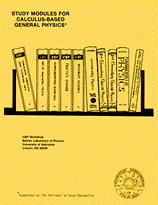Instructional Materials in Physics and Astronomy
Date of this Version
1975
Abstract
Energy is much in the news lately. The term "energy" usually refers to the inherent ability of a material system, such as a person, a flashlight battery, or rocket fuel, to bring about changes in its environment or in itself. Some common sources of energy are the fuel used to heat hot water, the gasoline that propels a car, the dammed water that drives the turbine in a hydroelectric plant, and the spinning yo-yo that can climb up its own string. Inanimate energy sources are of central importance in raising the standard of living of mankind above the subsistence level.
The physicist distinguishes among several types of energy, including kinetic energy (associated with a flying arrow or other moving object), elastic energy (associated with stretched or compressed strings), chemical energy (associated with fuel-oxygen systems or a storage battery), thermal energy (associated with the sun and other objects that are hotter than their surroundings), and nuclear energy. Applications of the energy concept in the science of mechanics, which you are studying now, usually concentrate on kinetic energy, potential energy (to be introduced in the module Conservation of Energy) and work (the transfer of energy by the action of a force. Sometimes the phrase "mechanical energy" is used to refer to the forms of energy of importance in mechanics.
When you get on your bicycle, you have undoubtedly noticed that it takes a good deal of effort to get yourself moving rapidly. If you exert yourself very strenuously, you can reach a given speed after a short distance; or you can take it easy and pedal over a longer distance to reach the same speed. In some sense it always takes the same amount of "work" to reach a given speed -- either a large exertion for a short distance or a small exertion for a long distance. You may also have noticed that if you are carrying a passenger on your bike, then it takes more "work" to reach the same speed.
It turns out that these intuitive relationships among the "work" done on a system, its mass, and changes in its speed can be sharpened into a precise statement, called the work-energy theorem. (One caution, though: the technical definition of work needed for this precise statement is different from its everyday usage and physiologic meanings; e.g., you do no work on a heavy box by merely holding it still.) As you will begin to see in the present module, this relationship between work and mechanical energy gives you a new and powerful tool for the solution of many problems, a tool that is often easier to use than a direct application of Newton's second law.


Comments
From Study Modules for Calculus-Based General Physics
Copyright © 1975 CBP Workshop, University of Nebraska–Lincoln.
Reproduction rights granted.